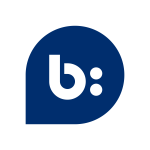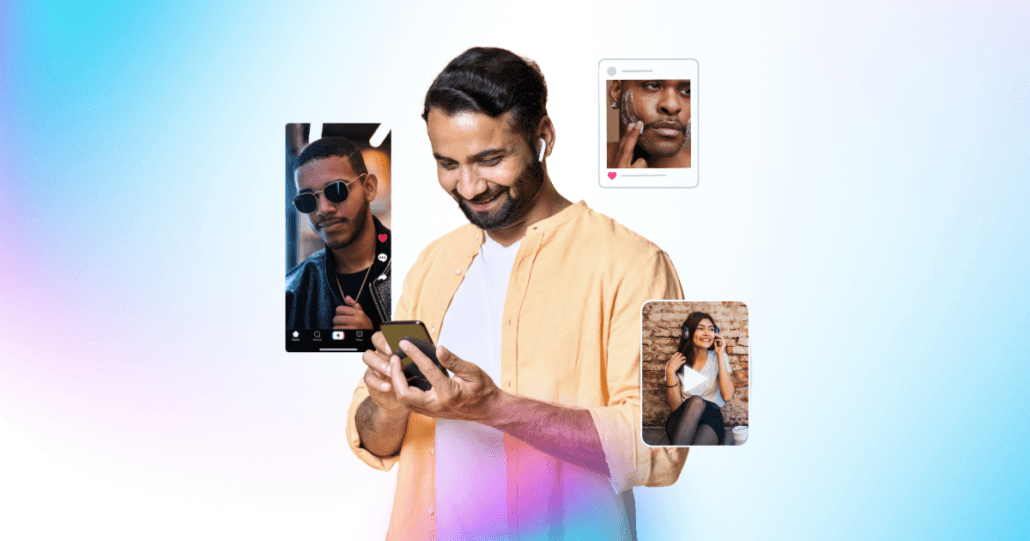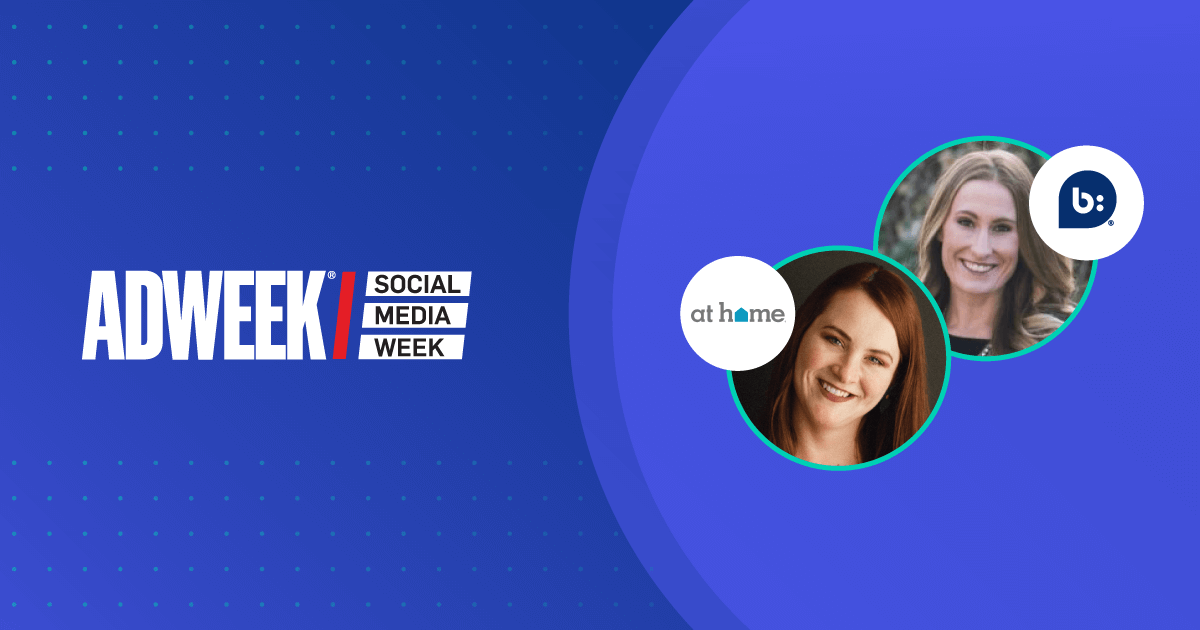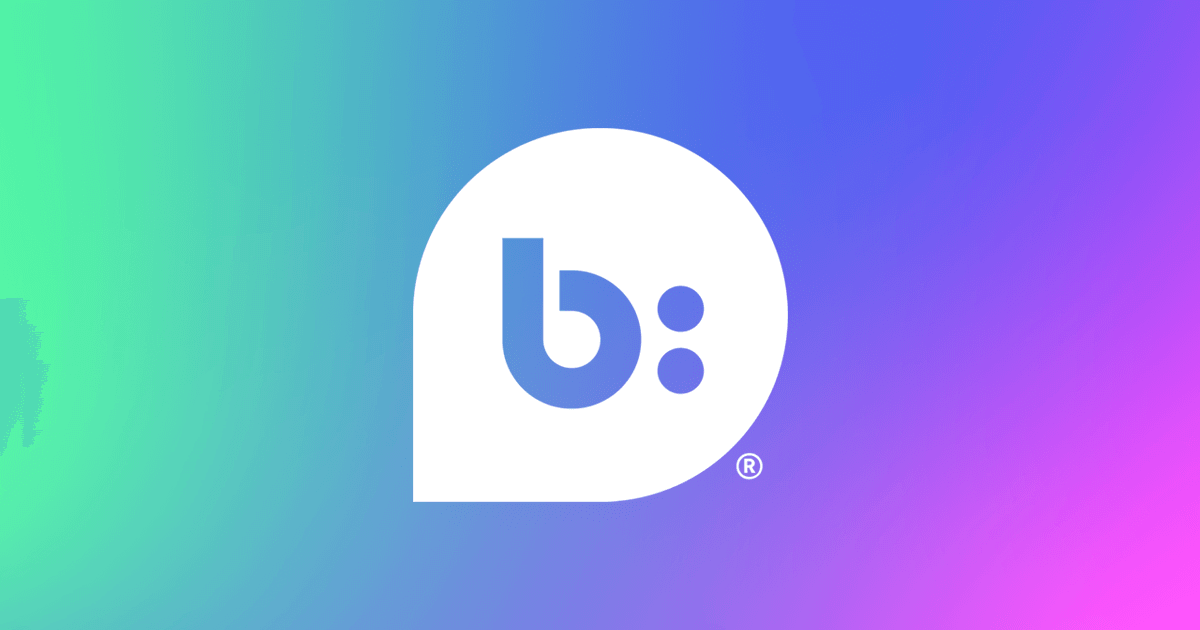May 1, 2024
Your brand is no longer yours. Creators have increasing influence over other consumers’ purchase decisions, and your brand is what they say it is. But that’s not a bad thing! In this creator economy, brands can harness the amazing potential of bringing more creator- and user-generated content into their content supply chains.
The creator economy market size is already valued at $250 billion and is predicted to reach half a trillion dollars by 2027, according to a Goldman Sachs report. This shows how shopping is evolving, what people think about authentic voices, and how the people who most influence shoppers have changed.
Let’s take a look at what the creator economy is, why creator content is valuable, how brands can leverage the creator economy, and the current and upcoming trends we’re seeing in the market.
What is the creator economy?
First, let’s define what a creator is. Content creators are people who produce and share material (think videos, blogs, photos, and social media posts) to engage and influence their audience. Often, they collaborate with brands to promote products and services.
So when we talk about a creator economy, we mean an ecosystem of brands, audience-shoppers, and creators who monetize their content through sponsorships, brand partnerships, merchandise sales, and direct audience support. Brands leverage these creators to reach targeted audiences, boost engagement, and drive marketing campaigns.
This is really changing how we think about what content is, and how you get your message to audiences that were never before possible. Some stats to put the creator economy into perspective:
- There are over 300 million global content creators — these creators are typically operating on at least two platforms
- 51% of advertisers will be significantly more focused on creator ad spending in 2024
- The creator economy is expected to grow to $480 billion by 2027 — up from $250 billion in 2023
- Brands are anticipating increasing creator content budgets by 25% in 2024
- 39% of consumers watch more creator content now than the year prior
This shows how quickly the creator economy is being legitimized. For example look no further than Addison Rae, one of the most popular influencers out there, who just starred in a Super Bowl commercial. It’s a huge opportunity for your brand to work with creators!
And one quick note: you might hear “creators” and “influencers” used interchangeably, but they’re really distinct. Influencers are trendsetters who can convince people to buy things. They might be celebrities, or just folks with lots of followers on social media. Creators, on the other hand, make the actual content (videos, photos, reviews) that can grab shopper attention. Can a creator be an influencer? Absolutely — if their content influences a purchase decision.
Benefits of the creator economy
The digital space is competitive and it’s getting harder to reach audiences purely with digital ad spend. Working with creators gives you an opportunity to connect with consumers, with more relevant and cost-effective content.
Hear Bazaarvoice’s own Global Head of Community Growth & Engagement, Terry Hurlbutt, outline some of these opportunities below in this short clip from her Bazaarvoice Summit presentation on creator economy trends and social shopping strategies.
Expanding on Terry’s expertise, let’s look into other benefits of the creator economy.
Boost authenticity
Creators build their brand(s) by making genuine connections with their audiences. They’re bringing their followers into their success, pitfalls, and even their stories of vulnerability in their daily lives. And that builds real connection. A connection strong enough that when they do offer a product, even in a paid partnership, their audiences are still really interested in learning more about the product their favorite creators share with them.
100% of shoppers we surveyed have purchased products based on a recommendation from another shopper they saw online, which circles back to the trust that the creator has built with their audience. If you follow someone who posts daily and you enjoy their content, you’re more inclined to go and get a product they enjoy.
Additionally, shoppers are now looking for less branded content and more UGC. At least 67% of shoppers polled rely more on UGC for shopping inspiration and fact-finding.
So there’s a real authenticity (and sales!) boost when you partner with creators — and when you do so, as the numbers suggest, you’re meeting your customers where they already live.
More relevant content
By its nature, the creator economy makes content more relevant to shoppers. What’s so helpful here is that this UGC helps consumers see how products look in a “real world” setting versus branded content, which still has a place but doesn’t necessarily show you that same real-world experience.
We tend to see higher engagement when visual UGC is integrated with branded content. According to our research, the majority of shoppers want to see both branded photos (83%) and shopper photos (76%) to make a confident purchase on product pages.
There’s also the amazing opportunity for creator content to help you increase your audience engagement and reach. Shoppers are more likely to follow their favorite brands. And so the more creator content you have in your social mix, the likelier your content pays off because shoppers are already following you on social.
Keep up with content demands
We need a lot of content.
Everyone working in the creator economy realm and social sphere knows how much time and effort is spent really trying to beat those pesky algorithms and stand out in a crowded social marketplace.
Over 500 hours of content is uploaded to YouTube every minute, 34 million videos uploaded a day on TikTok, and on Instagram there’s over 66,000 photos uploaded per minute. By comparison, those couple of pieces of branded content you upload per week aren’t even a drop in the ocean.
It can be tempting to produce branded content in-house. But in-house content can get expensive at the scale required to keep up on people’s feeds, and as we’ve already discussed, it’s simply not getting the same eyeballs as creator content. So rather than increasing investment to produce more content in-house, partner with creators who can pack your content supply chain with a steady flow of authentic content for you.
Creator economy trends
The creator economy will continue to evolve: such is the nature of working on social. It’s important to stay in the loop. So here are some of the latest trends that we, as experts in the creator partnerships space, are most excited about.
Brand storytelling
Do you ever find yourself a little worried sometimes because social media algorithms are just too good? Let’s say you’re a parent so you check out an account talking about parenting hacks. The next thing you know, your whole Explore page is full of parenting hacks and ideas.
You notice an abundance of brand-partnered creator content with tips for parenting, cooking, and staying organized in the midst of child-rearing. Whether it’s through memes or people sharing their tough moments of the day, they really resonate with you. You feel grateful for that connection. They make a significant impact on your life, and you’re deeply thankful for them.
This is brand storytelling in action, featuring content that speaks directly to your audience’s personal experiences and connects them to your brand. The power of social media and the creator economy recognizes the diverse voices and perspectives that contribute to your sense of community.
Video content
First it killed the radio star, now video is coming for your static images. 89% of consumers want to see more videos from brands this year. What video does that static images can’t is show shoppers your products in actual use. Whether it’s how to build something, how a jacket looks in motion, or how to assemble something, video provides a whole new way to look at a product.
And the post-purchase numbers speak for themselves. At least 57.4% of shoppers reported making a purchase after watching a product video on social media, including influencer videos. An additional 14.4% answered that, while they didn’t make a purchase, they enjoyed the video — which can be a nice boost for upper-funnel awareness.
Let your analytics decide for you whether static images or video works best, but between IG Reels and TikTok’s boom, video is a trend that can’t be ignored. TikTok shops intend to grow the business 10x this year, hoping to get to about $17.5 billion revenue, so video provides commerce opportunities also.
Livestream shopping
Another potentially lucrative angle for the creator economy is livestream shopping. Still in its infancy, it’s one of the most closely followed industry trends. Already big in China and other parts of Asia, livestream shopping has been gradually making its way stateside and consumers are taking note.

Livestream shopping provides brands with a new, engaging way to get products in front of shoppers — who can purchase them instantly!
How brands can succeed in the creator economy
Do you want to work with creators but you’re not sure where to start? Or maybe you’re experienced with influencer outreach and need a refresher? Here’s the best practices to follow.
Know what success looks like
Before you engage a creator, you need to know what you hope to achieve with the partnership. Think of all the things you could do with content, and how it might change depending on whether you’re trying to build awareness, say, versus driving sales, or changing brand perceptions, or increasing social engagement.
Having a good grasp on the metrics you care about will help you pick the right creator, as well as the length of the engagement (a quick-hit holiday campaign instead of an ongoing brand engagement).
Work with the right creator(s)
Not every creator will be the right fit for your brand. When you’re choosing creators to work with, influence (reach, engagement, brand values, and audience relationships) is more important than just their number of followers — 72% of consumers don’t actually care about follower counts and smaller audiences tend to see higher engagement anyway.
There are a lot of different creators out there who may have smaller follower counts, but who will align more closely with your brand, and would make more impact. The priority should be finding creators who align with your brand values and style, and letting them go and create.
Lean into the expertise of your creators. You’re partnering with them because they know exactly the best way to connect with their audiences. And because they put out content every day, they have their finger on the pulse of what works best.
When you reach out to them, just be very honest and clear about what you’re looking for and what your expectations are. Working with high-quality, brand-safe creators is really important. Tools like Bazaarvoice affable.ai can help you find, identify, reach out to, and manage relationships and campaigns with these creators on a long-term basis.
Pick the right platform
TikTok is an entertainment platform first and a social platform second. So be entertaining. Brands can reach new audiences by engaging with this form of entertainment. A good example is Prose. The hair care brand went outside of their traditional creator demographic and partnered with a comedic TikTok influencer to endorse them, and they reached a whole new audience.
And large gaming communities already exist, which provide a natural platform for digital expansion.
For example, clothing giant Gucci teamed up with Rook Vanguard, a creator for online game platform Roblox. Together, they built the Gucci Garden Experience which allowed users to explore various boutiques of virtual items.
Use your everyday creators
Regular people are creating every day. If you have a phone and an Instagram account, you’re a part of the creator economy. Which is why at Bazaarvoice, we always advise that the most effective change you can make is using this user-generated content from everyday people.
Not only is UGC considered more trustworthy and influential, it also supports stronger brand storytelling as we mentioned earlier — something a lot of brands struggle with on social media. Storytelling with UGC naturally leads to the community because you’re highlighting end users, and often those who were not paid but simply love your products.
And UGC doesn’t just tell a story, it drives sales too. Over 54% of shoppers say they’d be more likely to buy a product on social media if they could click the post and get product info right on the platform. Before, if you scrolled past a t-shirt you liked on Instagram, you’d then have to Google the brand and try and find the t-shirt manually. Now, with an effective social commerce solution, shoppers can go directly from app to checkout. No fuss!
Sharing community content helps grow your social media presence and builds positive relationships with your customers, leading to better advocacy, repeat customers, and increased sales.
Have a budget
When you’re just starting out with creator outreach, the budget can be as big or small as you want. It depends on what you’re ready to do from an investment standpoint. In the last few years, influencer marketing spending has increased, reaching $7.14 billion.
Reallocating budgets to creator marketing allows you to leverage a single creator across multiple platforms, from social media to live streams and TV, delivering diverse content experiences. This approach enables you to reach a broader audience and maximize impact by partnering with creators from various categories.
Sample your products
If you want everyday shoppers posting content about your brand (reminder: you do!) you need to get your products in their hands. Product sampling is how you do it. A hyper-targeted product sampling campaign ensures you:
- Launch products with a bang by collecting reviews and imagery from your community pre-launch
- Give life to core products by generating fresh reviews
- Collect valuable customer feedback to improve messaging and identify new market opportunities
Getting started in the creator economy
In the consumer-to-consumer era we’re living in, it’s creators who are your new storefront. They’re not only creating original content, but they’re influencing other shoppers. Consumers no longer rely on content or marketing from brands, they rely on authentic UGC created by their fellow shoppers. That’s what’s going to influence them to make a purchase, not you.
The creator economy is not a passing trend, it’s essential for the success of your business.
The first step to getting started with the creator economy is to leverage UGC, and those who are creating it. But not all content is created equally. You’ll want to make sure you find the right creator(s) for your brand and team up with a platform that can combine the power of creators with social commerce solutions.









